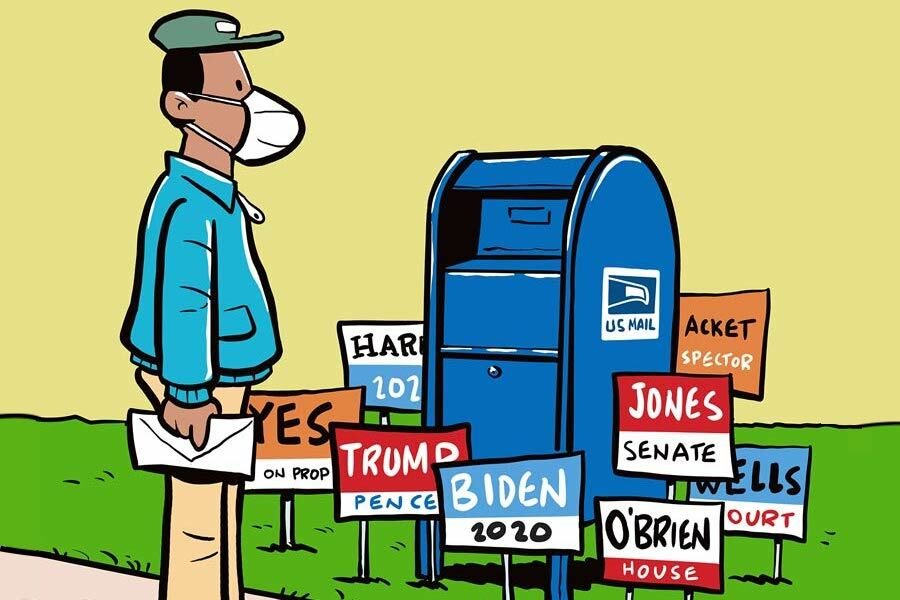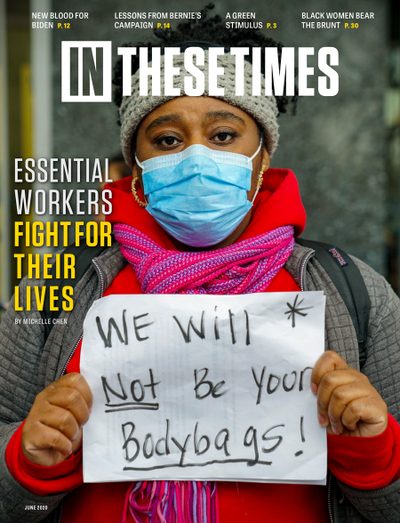Want a Real Election This Fall? Enact Vote-by-Mail.
Mail-in voting could be crucial to a safe and fair election this fall.
In These Times Editors

vote • by • mail
noun
1. Ballot-casting by post, away from crowded polling places
“Wisconsin voters had to choose between making their voice heard and keeping [themselves] safe. No American should ever have to make that choice.” —Michelle Obama on Wisconsin’s Pandemic Primary
In other words, the new normal for elections during a pandemic?
In a sane world, yes, all remaining 2020 elections should be conducted by mail for public health reasons. But that doesn’t stop our president from claiming that vote-by-mail is “RIPE for FRAUD.” (Ironically, Trump cast his Florida primary ballot by mail this year.) In April, Wisconsin’s Democratic governor pushed for a postponed and completely mail-in primary due to the risk of in-person voting amid the pandemic, but the GOP-controlled state legislature pushed back with support from the Wisconsin Supreme Court, and in-person voting went ahead as planned — turning vote-by-mail into a major partisan issue.
Don’t most states already allow vote-by-mail?
All states allow some form of absentee voting and a number of states — including some with Republican governors, like New Hampshire, Maryland and Ohio — are taking measures to expand vote-by-mail, but more than a dozen require voters to have a specific reason they can’t make it to the polls, such as disability or travel. In Texas, a legal battle over the issue is brewing along party lines.
What are the objections to vote-by-mail?
The objections are mostly ideological, but the claims that vote-by-mail encourages fraud and benefits Democrats are empirically untrue. Another objection involves the burden put on states. Expanding vote-by-mail in time for November will require some states to quickly adopt new software and staff, something the federal government can (and should) help with. The latest coronavirus relief bill allocates $400 million to states for election security, which could be used to expand vote-by-mail programs (though many Republican-controlled state legislatures have been busy with voter suppression measures since at least 2013, when the Supreme Court struck down part of the Voting Rights Act).
How do we make sure we actually get to vote in November?
A rapid transition to vote-by-mail elections may cause some confusion at first, so election officials will need to make appropriate accommodations. The Brennan Center estimates that securing the 2020 election against Covid-19 could cost up to $2 billion, mostly to print and post ballots while keeping voters informed. Voting-rights experts are not calling for an exclusively vote-by-mail system in 2020, however, which would effectively disenfranchise some communities. Voters on Native American reservations often rely on faraway post office boxes, for example, while other voters rely on translation services and voting machines that accommodate disabilities. But offering mail-in ballots for all while expanding early voting sites would go a long way toward safe and fair elections — the bare minimum of democracy, really.








